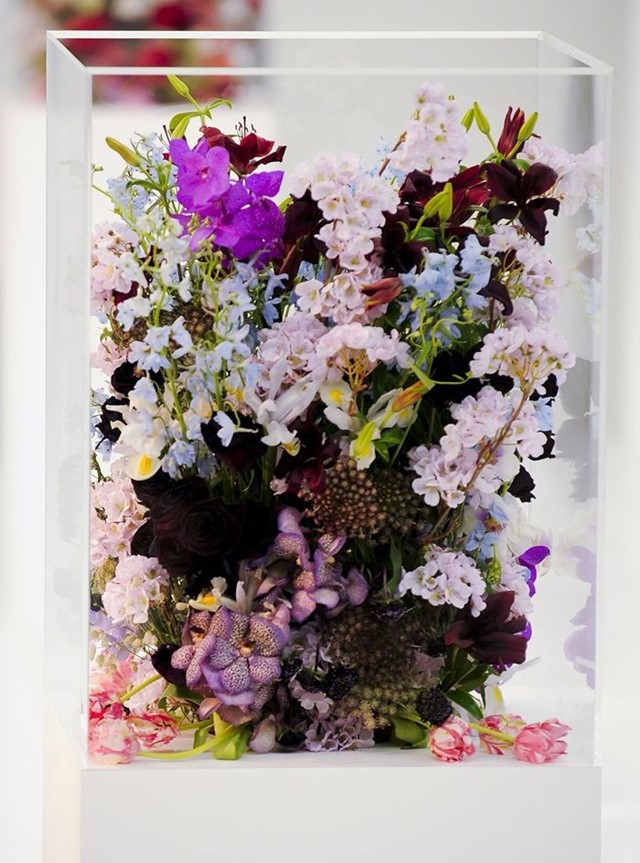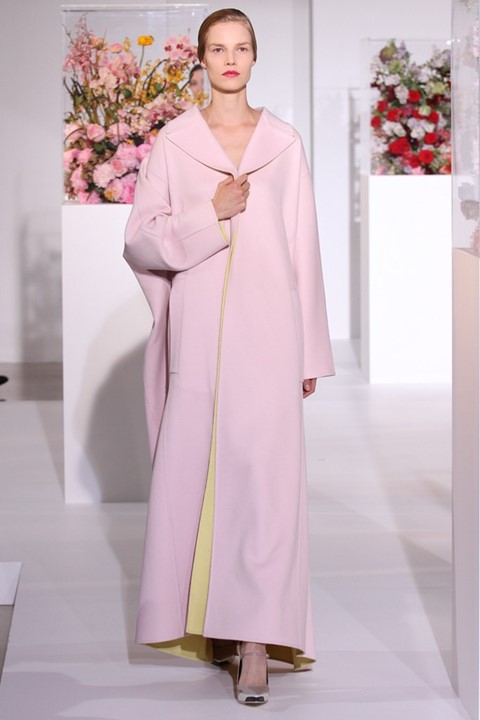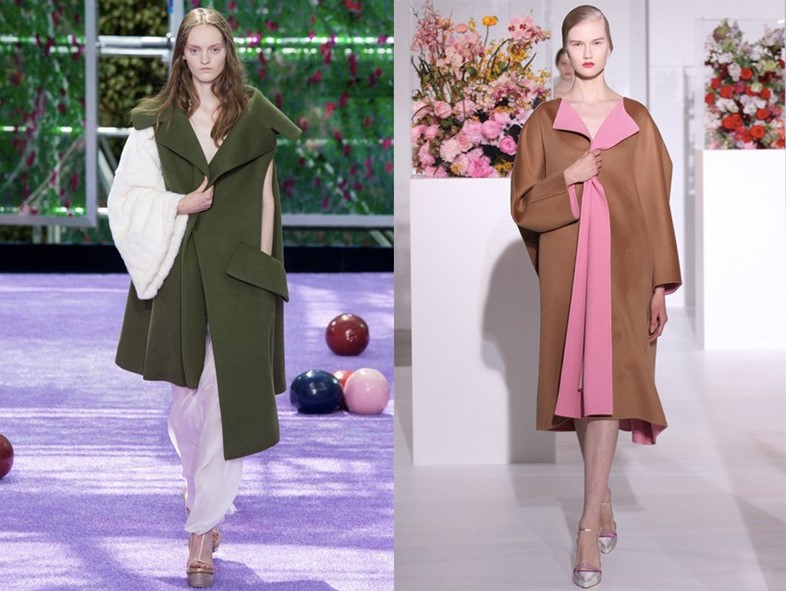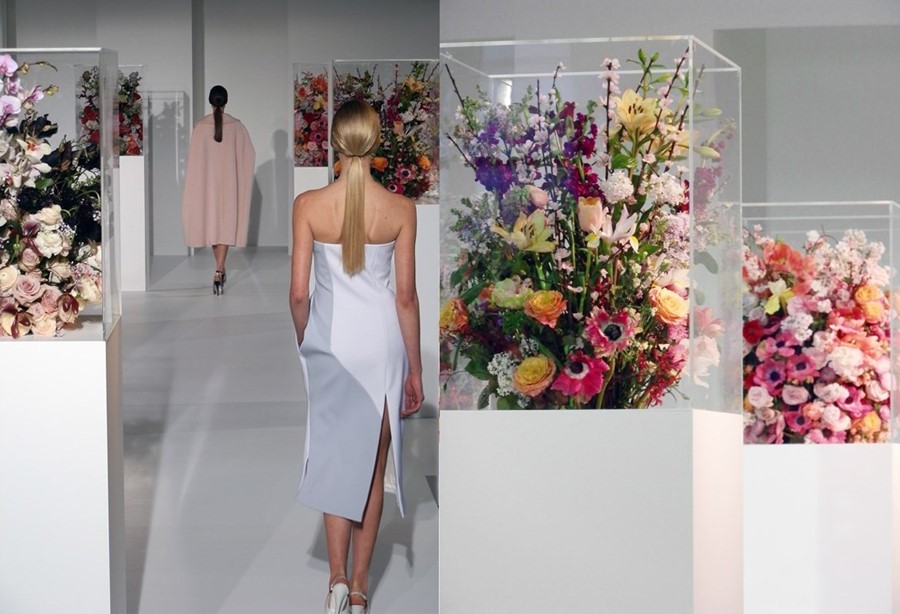We revisit the sublime A/W12 Jil Sander show that closed the first chapter of Simons' venture into womenswear
When Raf Simons arrived at Jil Sander in 2005, it was as a novice within the field of womenswear, having spent his career previous designing only for men at his eponymous brand. His departure from the label – with his A/W12 collection – was to a standing ovation from show attendees, and left an indelible legacy of poetic femininity on a house previously renowned for an almost austere minimalism.
“I was completely attracted to the history of Christian Dior at that time” - Raf Simons
“I was completely attracted to the history of Christian Dior at that time,” explained Simons to Imran Amed when describing his final years at the brand. “I was almost expecting myself to fall more in love with Balenciaga or Givenchy, because of its kind of futurist, clinical, architectural outcome. But I did not.” It’s the sort of statement that one could assume was borne of PR shtick if it came from another designer – but, looking over Simons’ final collections for Jil Sander, one can see that he truly did fall for Dior. The contemporary reworking of those vintage silhouettes, the same devotion to florals as M. Christian Dior, the indisputable womanliness of it all was all present in his final collection; one that Hamish Bowles described as “an exquisite coda to his remarkable career,” and that somehow became a premonition for his subsequent appointment at the house.

The Show
Before the show, Simons explained that this collection was, as Suzy Menkes stated, “inspired by the concept of a woman in her own domestic environment with husband or lover, ‘a day of family life and the beauty of that.’” Coats “the color of face powder” were clasped closed by the models as if they were robes thrown onto a nude body as a doorbell rang. Blushing pink and shimmering silver slips hung a little loose, maybe nightgowns; there was an evening dress whose fabrication almost resembled black rubbish bags; a tinfoil silver skirt. It was sexy and witty and human; as Agata Belcen, AnOther Magazine's Senior Fashion Editor stated at the time, Simons was "unapologetic in his vision of classic femininity mixed with unnerving realism – in his clothes you can read female characters who are immaculately turned out, but something unsettling lurks underneath, confined to a private sphere, while they get on with their daily duties."

The looks were presented on a runway decorated by plexiglass cubes of flowers designed by florist Mark Colle, who later described his creations to Laura Bradley as “highlighting the romance, femininity and fragility of the designs,” – and their modern nostalgia seemed to perfectly summate the show's atmosphere. Yet, rather than being overly sentimental or mournful, there was a celebratory atmosphere alongside reference to the subcultural influences that Simons became known for in his early years: Mazzy Star and Sonic Youth and Smashing Pumpkins soundtracked the show, inspiring the audience into a frenzied glee.

The People
Simons' departure from Jil Sander was a shock announcement made only the week previous and the industry went all out in emphatically congratulating his tenure. When Sonic Youth's cover of The Carpenters' Superstar was played, the audience arose in a standing ovation. Then, after his finale, they flooded the runway begging Simons to return for a second bow. Even the flowers were received warmly, as Colle said, "The reaction from the audience was also really positive – even Anna Wintour liked them!" It was a rare moment of the entire industry uniting in raptorous acclaim for a man who, in seven years, made an immeasurable impact on womenswear fashions; as Vanessa Friedman noted, "he went out with the sort of audience reception normally granted rock stars or George Clooney."

The Impact
"I have repeatedly been inspired by the gestural quality of Mr Dior’s work," explained Raf Simons after Christian Dior Haute Couture A/W15, a collection that incorporated the same, somehow sensual hand gestures as at Jil Sander A/W12. The undone nunances of femininity that became the overarching aesthetic of Jil Sander S/S12 are the same twists that have since permeated Simons' career at Dior; taking the traditional or the conservative histories of both womanhood and the brands themselves and adapting them to his own subversive framework. While Jo-Ann Furniss claimed it was Martin Margiela who most clearly impacted Dior Couture in A/W15, it was M. Dior who seemed most present at Jil Sander – and the impact that the show has had on his career since, as well as the industry itself, has been immense.
